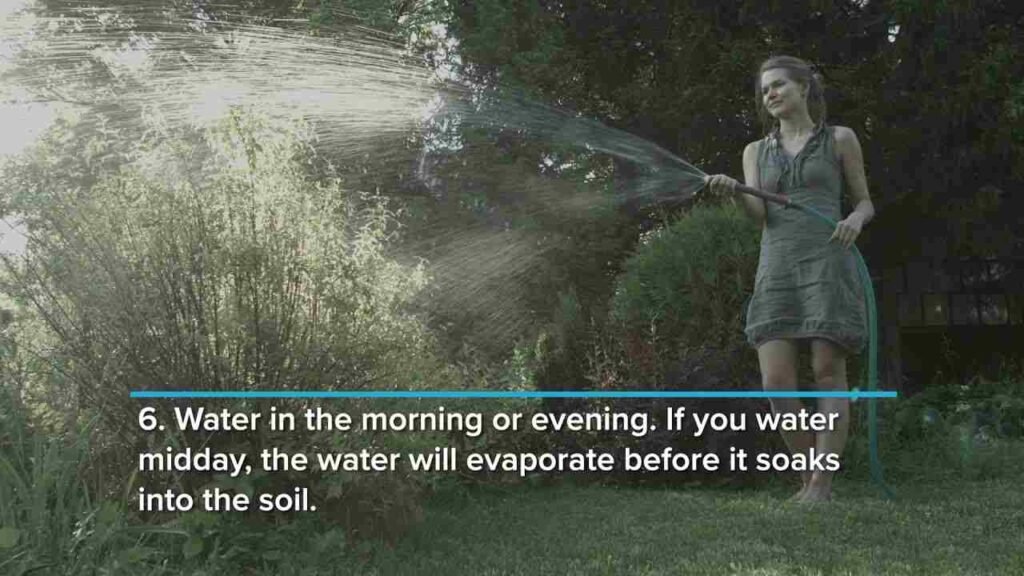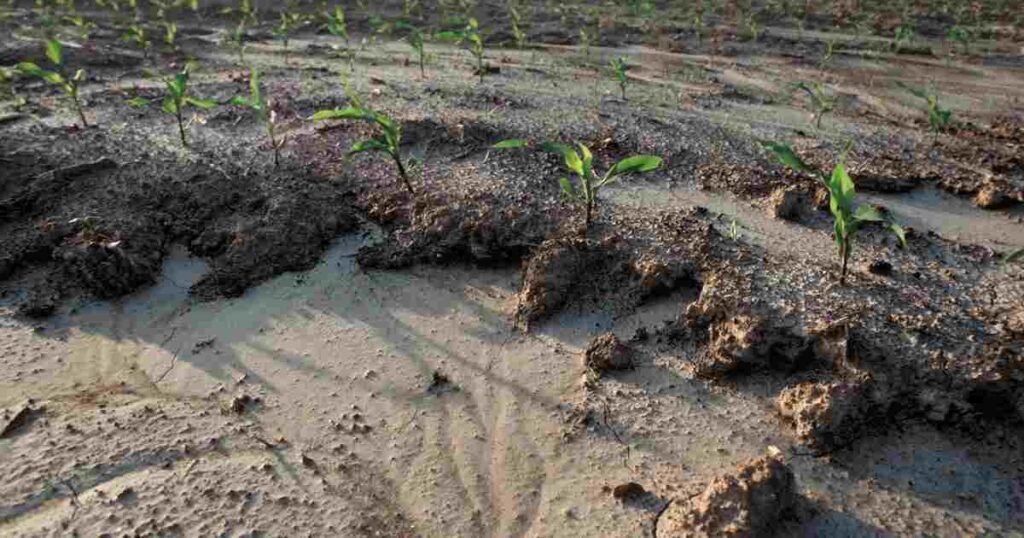When it comes to maintaining a lush, green lawn in Tilton, NH, proper lawn grading is a crucial factor often overlooked. Grading isn’t just about creating a visually appealing landscape; it plays a significant role in effective water management. By shaping your lawn to direct water flow and improve drainage, you can enhance water conservation and reduce the risk of erosion and water wastage. In this guide and with the help of Superior Hydroseeding Liquid Lawns, we’ll explore how lawn grading can be a game-changer for both your lawn’s health and your water conservation efforts in Tilton.

Proper grading ensures that water is evenly distributed across your lawn, allowing it to penetrate the soil more effectively and reach the roots where it’s needed most. This reduces the need for excessive watering and helps prevent areas of standing water that can lead to lawn diseases. Additionally, well-graded lawns through professional lawn grading services minimize runoff and soil erosion, promoting better water conservation and healthier grass growth.
Understanding Lawn Grading Basics
Lawn grading involves shaping and leveling the surface of your yard to improve water flow and prevent drainage problems. It typically includes adjusting the slope to ensure that water moves away from structures and does not pool in low areas. Assessing your lawn before grading is crucial to identify existing issues and determine the necessary adjustments. Proper grading helps create a smooth, even surface that supports healthy grass growth and minimizes erosion. Understanding the basic principles of grading, such as slope, contour, and drainage, is essential for effective lawn management. This foundational knowledge sets the stage for implementing grading techniques that enhance both the functionality and aesthetics of your lawn.
Benefits of Proper Lawn Grading
Proper lawn grading offers several benefits that contribute to the health and appearance of your yard. By ensuring even water distribution, grading helps reduce water waste and minimizes the risk of puddling and water logging. This leads to more efficient irrigation and promotes healthier grass growth. Additionally, well-graded lawns prevent soil erosion and protect against damage from runoff. The tools needed for effective lawn grading include a shovel, rake, leveling tool, and possibly a rototiller for larger areas. Grading also improves the overall aesthetics of your lawn, providing a smooth, attractive surface that enhances curb appeal.
How Lawn Grading Improves Water Distribution
Lawn grading is crucial for optimizing water distribution across your yard. By adjusting the slope and contour of the land, grading helps direct water flow in a way that ensures even coverage and prevents runoff. Proper grading allows water to penetrate the soil more effectively, reaching the root zones where it’s needed most. This reduces the need for frequent watering and helps maintain a consistent moisture level in the soil. Well-graded lawns also prevent water from pooling in low areas, reducing the risk of lawn diseases and promoting healthier grass growth.
Impact of Lawn Grading on Soil Erosion
Lawn grading plays a significant role in preventing soil erosion by controlling water flow and reducing runoff. Proper grading techniques help create a stable surface that directs water away from vulnerable areas and minimizes soil displacement. By smoothing and leveling the terrain, grading helps maintain the integrity of the soil structure and reduces the likelihood of erosion caused by heavy rainfall or irrigation. This protection is essential for preserving the health of your lawn and preventing damage to landscaping and surrounding areas. Effective grading ensures that soil remains in place, supporting long-term lawn health and stability.

Choosing the Right Lawn Grading Method
Selecting the appropriate lawn grading method depends on various factors, including the size of your yard, existing terrain, and specific drainage issues. Common methods include manual grading with hand tools for smaller areas and using heavy machinery for larger spaces or more complex grading tasks. For precise and efficient results, it’s important to choose a method that aligns with your lawn’s needs and the extent of grading required. Consulting with a professional can help you determine the best approach and ensure that grading is performed effectively to achieve optimal results.
Common Lawn Grading Mistakes to Avoid
Avoiding common lawn grading mistakes is crucial for achieving effective results and maintaining a healthy lawn. One frequent mistake is improper slope adjustment, which can lead to water pooling or runoff problems. Another issue is inadequate soil preparation, which affects the grading’s stability and effectiveness. Skipping the assessment of existing drainage conditions can also result in unresolved issues. Ensuring that grading is performed correctly requires attention to detail and an understanding of the land’s natural contours and drainage patterns. Addressing these common pitfalls will help you achieve a well-graded lawn that functions efficiently and supports healthy grass growth.
Lawn Grading and Its Role in Water Conservation
Lawn grading significantly contributes to water conservation by optimizing how water is distributed and absorbed in your yard. By creating proper slopes and contours, grading ensures that water is directed where it’s needed, reducing the amount of water lost to runoff. This efficient use of water not only conserves resources but also reduces your water bills. Proper grading helps minimize areas of standing water, which can be wasted through evaporation or infiltration. By promoting better water management and reducing the need for excessive irrigation, lawn grading supports sustainable practices and helps maintain a healthy, green lawn.
Signs Your Lawn Needs Grading
Recognizing the signs that your lawn needs grading is essential for timely intervention and maintenance. Common indicators include uneven surfaces, water pooling in low areas, and poor drainage leading to waterlogged spots. Additionally, noticeable erosion, such as exposed soil or sediment build-up, can signal the need for grading. If your lawn experiences persistent issues with water runoff or has an overall uneven appearance, it may be time to consider grading. Addressing these signs promptly helps prevent further damage and ensures that your lawn remains healthy and functional.
Cost Considerations for Lawn Grading Services
The cost of lawn grading services varies based on several factors, including the size of your yard, the complexity of the grading required, and local labor rates. Generally, costs can range from a few hundred to several thousand dollars. It’s important to get multiple quotes from reputable professionals to ensure competitive pricing. Additionally, consider the long-term benefits of grading, such as improved water management and reduced maintenance costs, when evaluating the investment. Investing in quality grading services can enhance the health and appearance of your lawn while providing lasting value.
DIY vs. Professional Lawn Grading: What’s Best?
Deciding between DIY lawn grading and hiring a professional depends on the complexity of the grading required and your experience level. DIY grading may be suitable for small, straightforward projects where basic tools and techniques are sufficient. However, for larger or more complex grading tasks, professional services offer expertise and equipment that ensure precise results and efficient completion. Professionals can assess your lawn’s unique needs and apply advanced grading methods that might be challenging to achieve on your own. Weighing the pros and cons of each option will help you determine the best approach for your lawn.
Maintaining Your Lawn After Grading
Proper maintenance after lawn grading is essential for ensuring the success of the grading work and promoting healthy grass growth. Start by monitoring the newly graded areas for any signs of settling or erosion, and address these issues promptly. Regularly water your lawn to help the grass establish and fill in any bare spots. Apply a balanced fertilizer to support new growth and maintain soil health. Avoid heavy foot traffic and heavy equipment on the newly graded areas until the grass has fully established. Ongoing care and maintenance will help you achieve a vibrant, well-functioning lawn that benefits from your grading efforts.
Conclusion
Proper lawn grading is a vital step in creating a healthy, functional, and aesthetically pleasing lawn in Tilton, NH. By addressing issues such as water distribution, soil erosion, and proper drainage, grading ensures that your lawn receives the optimal conditions for growth and resilience. Understanding the best practices, common mistakes, and maintenance tips related to grading can significantly enhance the effectiveness of your lawn care efforts. Whether you choose DIY methods or professional services, investing in proper grading helps conserve water, prevent erosion, and maintain an even, lush lawn. Ultimately, effective lawn grading sets the foundation for a thriving outdoor space that enhances your home’s beauty and functionality.
FAQs
What is lawn grading and why is it important?
Lawn grading involves shaping and leveling your yard to improve water flow and prevent drainage issues. It’s important for ensuring even water distribution, reducing erosion, and promoting healthy grass growth.
When is the best time to perform lawn grading?
The best time for lawn grading is typically during the early spring or late summer when the soil is workable and weather conditions are favorable. This timing helps ensure that your lawn establishes effectively before extreme temperatures.
Can I perform lawn grading myself, or should I hire a professional?
DIY grading can be suitable for small, simple projects, but for larger or more complex tasks, hiring a professional is recommended. Professionals have the expertise and equipment to ensure precise and efficient grading.
How do I know if my lawn needs grading?
Signs that your lawn may need grading include uneven surfaces, water pooling in low areas, and noticeable erosion. If you observe these issues, grading can help address them and improve your lawn’s overall health.
What are the costs associated with lawn grading services?
Costs for lawn grading vary based on yard size, complexity, and local rates. Typically, pricing ranges from a few hundred to several thousand dollars, so it’s wise to get multiple quotes to ensure competitive pricing.

